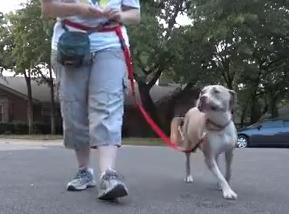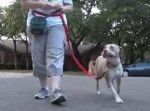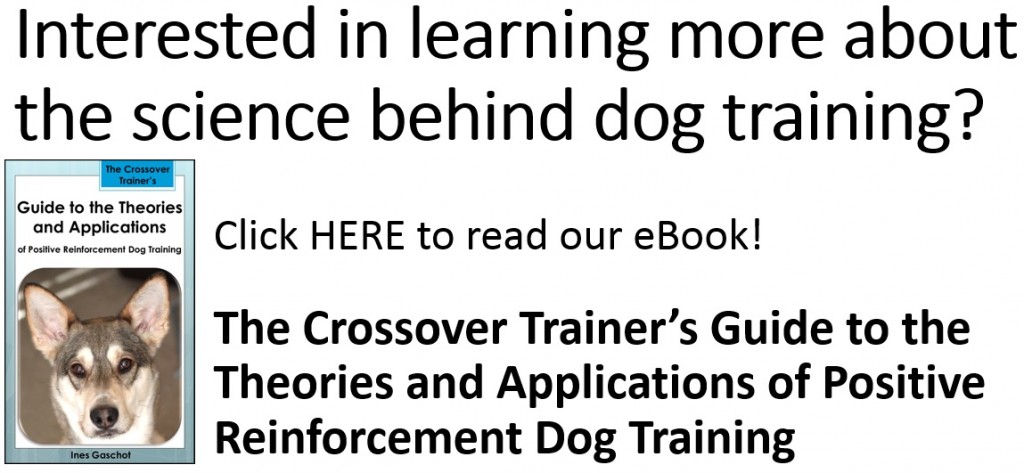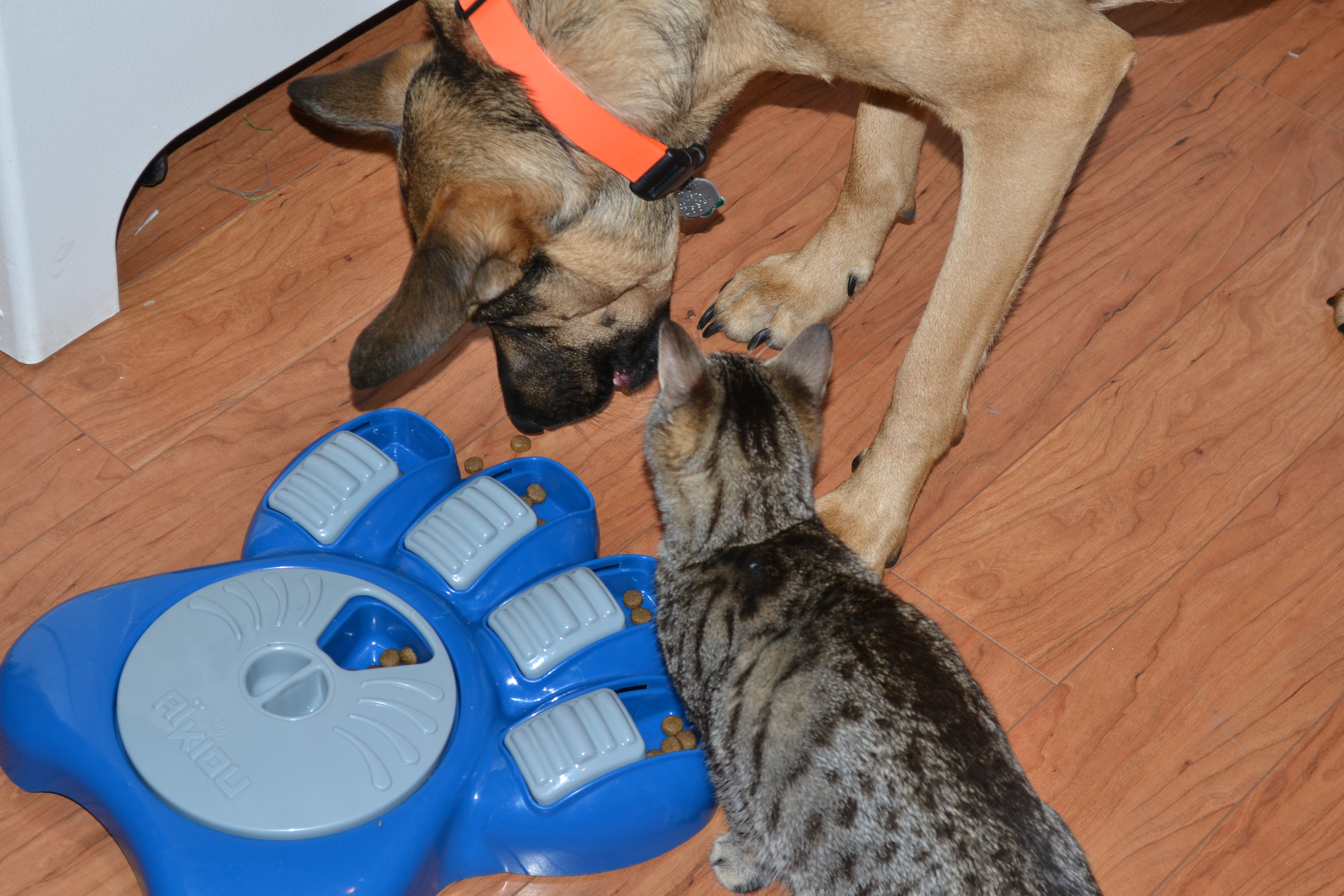 Pulling on a leash is probably close to the number one request to fix when someone hires a dog trainer. No dog is born knowing how to walk on a leash. In fact, they are born with an instinct that makes them want to pull against things that are attached to them – it is a survival mechanism. In the wild or on the street, it would make sense for a dog, and any animal, to want to escape something attached to them, however, this reflex is exactly the opposite of what we don’t want for loose leash walking.
Pulling on a leash is probably close to the number one request to fix when someone hires a dog trainer. No dog is born knowing how to walk on a leash. In fact, they are born with an instinct that makes them want to pull against things that are attached to them – it is a survival mechanism. In the wild or on the street, it would make sense for a dog, and any animal, to want to escape something attached to them, however, this reflex is exactly the opposite of what we don’t want for loose leash walking.
The technique I am about to describe works for any dog, any age, any size and ANY breed. There are myths out there that say that if you have a “bully” breed or a large breed dog, Positive Reinforcement training doesn’t work. I have even heard other dog trainers who use e-collars and/or corrective based methods say this. They often mislead their clients into believing this myth. Because of this, the videos I have chosen to demonstrate this technique use a pitbull.
I have met this pitbull on multiple occasions and she is one of the highest energy dogs I have ever met. Her name is Pinky and shes got energy, but she is adorable! She is currently still up for adoption and you can visit her Facebook page by clicking HERE.
The Technique:
- Never move when your dog pulls. If you move when your dog pulls, in your dog’s mind he is thinking that he is the one causing the movement forward which reinforces his pulling. Just stop right in your tracks if there is any pressure on the leash.
- If your dog pulls non stop outside, you will need to start your leash training indoors where there are less distractions. You need to start working where your dog is comfortable enough to focus on you. Check out Sophia Yin’s “Learn to Earn” Program.
- Click or mark for any release of pressure on the leash or any slack in the leash. Remember to always follow your marker word or clicker with a yummy treat!
- Talk to your dog! Talking to your dog helps the dog focus on you and not get too distracted by other stimuli – they aren’t good multitaskers. If they are focused on you, they won’t notice other stimuli. Many dogs love having your attention and the interaction they can get from you.
- As you increase distractions, increase the value of food or toy. You want to maintain your dog’s motivation. With Loker I use chicken and hot dogs for highly distracting areas – like when we did the group class – since he is reactive on leash towards other dogs or fast moving people.
- Every time your dog is on leash, it is a training session. This means that until your dog walks well on leash, you need to find other ways to exercise your dog. What I do for Loker is have him use the treadmill and go on bike rides. Basic obedience training sessions in your home help you build a better relationship with your dog and mental stimulation is exhausting for a dog! A tired dog is a happy dog!
This technique builds up a new “habit” for your dog when he is on a leash. His old habit of pulling is now replaced with a loose leash. You will not have to use treats forever although I would encourage you to always carry something very yummy for unexpected situations. Also, you can always talk to your dog to tell him he’s doing great!
The videos below show a before and after. Video 1 shows Pinky’s first loose leash training session. Video 2 is about a month later after just a few training sessions.
Video 1
Video 2
Special thanks to Stacy Greer of Adventures in Canine Training for letting me use her videos!





